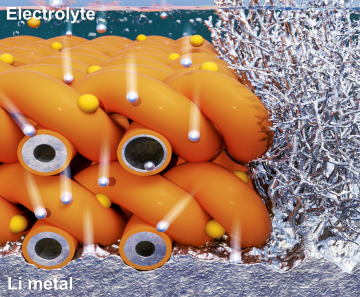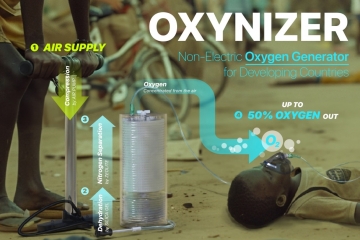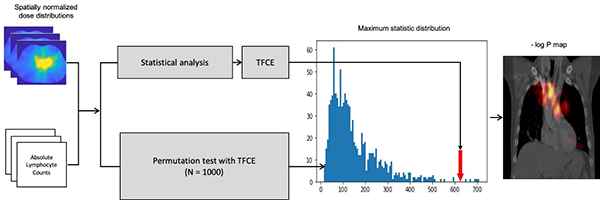KAIST
BREAKTHROUGHS
Research Webzine of the KAIST College of Engineering since 2014
Spring 2025 Vol. 24Cancer survival correlates with lymphocyte counts in chemoradiotherapy
Cancer survival correlates with lymphocyte counts in chemoradiotherapy
Investigations into lymphocyte dynamics, i.e., depletion and recovery, during radiotherapy have revealed a strong correlation with the survival of patients undergoing concurrent chemoradiotherapy and adjuvant immunotherapy. Voxel-based analysis further indicates a high correlation between the radiation dose to large vessels and lymphopenia at the end of chemoradiotherapy, suggesting that efforts should be made not only to prevent lymphocyte depletion during chemoradiotherapy but also to help lymphocyte recovery after.
Article | Fall 2022
Radiotherapy (RT) is a double-edged sword when combined with immune dynamics, as it has both immune stimulatory and suppressive effects. RT stimulates the immune system by releasing inflammatory cytokines and inducing immunologic cell death. On the other hand, lymphocytes are among the most radiosensitive cell lines, and it has been shown that radiation can reduce immune responses.
The motivation behind this study comes from indications that radiation-induced lymphopenia is strongly linked to the RT dose distribution and the dose to specific structures, and could possibly be mitigated.
Yejin Kim and Prof. Seungryong Cho of the Department of Nuclear and Quantum Engineering, in collaboration with Prof. Clemens Grassberger at Massachusetts General Hospital and Prof. Jinsung Kim at the Yonsei Cancer Center, have investigated patterns of lymphocyte depletion during concurrent chemoradiotherapy (CCRT) and evaluated how the recovery of peripheral lymphocytes affects the prognosis of patients with stage III non-small cell lung cancer receiving chemoradiotherapy followed by maintenance immunotherapy. Furthermore, they investigated the confounding factors that affect lymphocyte recovery using multi-linear regression, and found a correlation between the spatial dose distribution and lymphocyte decline and recovery using voxel-based analyses (VBA). A detailed explanation of the VBA procedure is described in Fig 1.
A multivariable Cox regression analysis including all factors associated with absolute lymphocyte counts (ALC) and survival outcome revealed that recovery from lymphopenia after CCRT was the only significant prognostic factor for overall survival (OS) (HR 0.24, 95% CI 0.08–0.68, p = 0.007) and progression-free survival (PFS) (HR 0.35, 95% CI 0.13–0.93, p = 0.034). Furthermore, VBA of dose differences between patients with and without G3+ lymphopenia during the last week of CCRT showed statistically significant differences in the doses to large vessels. The main figure shows a -log(p) map of the ALC in the last week of RT, where areas with visible color-wash (-log(p) > 3) indicate a significant correlation (p < 0.05).
It has been found that for patients who receive maintenance immunotherapy after CCRT, recovery from lymphopenia is essential for improved outcomes. Furthermore, significant correlations between the dose to large vessels in the upper mediastinum and lymphopenia at the end of CCRT have been demonstrated. These findings indicate that clinical strategies to both preserve the lymphocyte count during CCRT and to support recovery from lymphopenia after CCRT are needed.
This work was published in Radiotherapy and Oncology (vol. 168, 1-7 (2022)). In recognition of her presentation of the achievements of this research, Yejin Kim received the Young Investigator Award at the PTCOG (Particle Therapy Co-Operative Group) 2022 Conference in Miami, FL, USA.
Additional link for more information:
https://www.sciencedirect.com/science/article/pii/S0167814022000111
Most Popular

When and why do graph neural networks become powerful?
Read more
Smart Warnings: LLM-enabled personalized driver assistance
Read more
Extending the lifespan of next-generation lithium metal batteries with water
Read more
Professor Ki-Uk Kyung’s research team develops soft shape-morphing actuator capable of rapid 3D transformations
Read more
Oxynizer: Non-electric oxygen generator for developing countries
Read more
